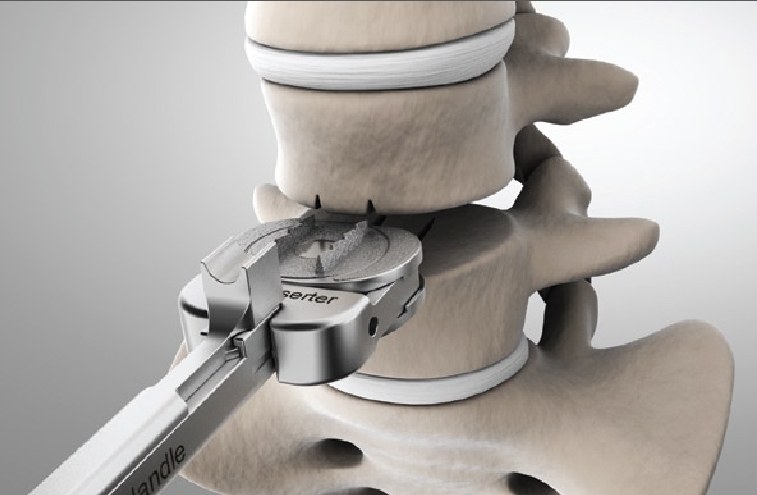Background:
Reduction of lumbar spondylolisthesis during spinal fusion surgery is important for improving the fusion rate and restoring the sagittal alignment. Despite the variety of reduction methods, the fundamental mechanics of lumbar spondylolisthesis reduction remain unclear. This study aimed to investigate the biomechanical behavior while performing spondylolisthesis reduction with the anterior and posterior lever reduction method.
Methods:
We developed an L4-L5 spondylolisthesis model using sawbones. Two spine surgeons performed the simulated reduction with a customized Cobb elevator. The following data were collected: the torque and angular motion of Cobb, displacement of vertebral bodies, change of lordotic angle between L4 and L5, total axial force and torque applied on the model, and force received by adjacent disc.
Results:
Less torque value (116 N-cm vs. 155 N-cm) and greater angular motion (53o vs. 38o) of Cobb elevator were observed in anterior lever reduction. Moreover, the total axial force received by the entire model was greater in the posterior lever method than that in the anterior lever method (40.8 N vs. 16.38 N). Besides, the displacement of both vertebral bodies was greater in the anterior lever method.
Conclusions:
The anterior lever reduction is a more effort-saving method than the posterior lever reduction method. The existing evidence supports the biomechanical advantage of the anterior reduction method, which might be one of the contributing factors to successfully treating high-grade lumbar spondylolisthesis with short-segment instrumentation.
Keywords:
Anterior lever reduction; Biomechanical study; Lumbar spondylolisthesis; Posterior lever reduction.

